Dogs might not speak our language, but they’ve mastered a surprising number of our words—especially when those words lead to belly rubs, treats, or a trip outside.
Through repetition and tone, dogs learn to associate sounds with outcomes, creating their own mental dictionary. While some words spark tail wags instantly, others fly right over their heads, no matter how clearly we say them.
Understanding which words dogs do respond to can improve how we communicate with them—and help us avoid the ones that leave them confused. Let’s explore the most common words dogs actually understand, and a few that don’t mean anything at all to our four-legged companions.
Sit – The Canine Classic

Nearly every trained dog learns “sit” early on. It’s one of the most consistently recognized commands due to its simplicity and frequent use during obedience training. This command forms the foundation of many training programs, offering a starting point for dogs to learn discipline and self-control.
When a dog sits, it often signifies readiness to listen and engage with its owner. It’s more than just a command; it’s a way to establish a connection between human and animal, fostering trust and understanding.
The universality of “sit” makes it a go-to command in various situations, whether at home or in public.
Stay – The Patience Builder

“Stay” teaches dogs self-control and spatial awareness. While it requires reinforcement, most dogs recognize it as a cue to remain in place until released. This command is crucial for preventing accidents and ensuring safety in unpredictable environments.
Teaching “stay” empowers dogs to resist distractions and maintain composure. It tests their patience and enhances their focus, allowing them to become more disciplined.
The effectiveness of “stay” lies in consistent practice, turning it into a reliable command during moments when steadiness is needed most.
Come – A Life-Saving Recall

Many dogs understand “come” or their name as a recall command, especially when it’s tied to positive outcomes like treats or praise. This command can be a lifesaver, drawing dogs away from potential dangers or undesirable situations.
“Come” encourages dogs to return to their owners promptly. It’s often reinforced with rewards, making it a joyous and eagerly anticipated command.
By mastering “come,” dogs gain the ability to navigate spaces safely, responding swiftly to their owner’s call. It’s an essential part of any dog’s command repertoire.
No – The Universal Stop Signal
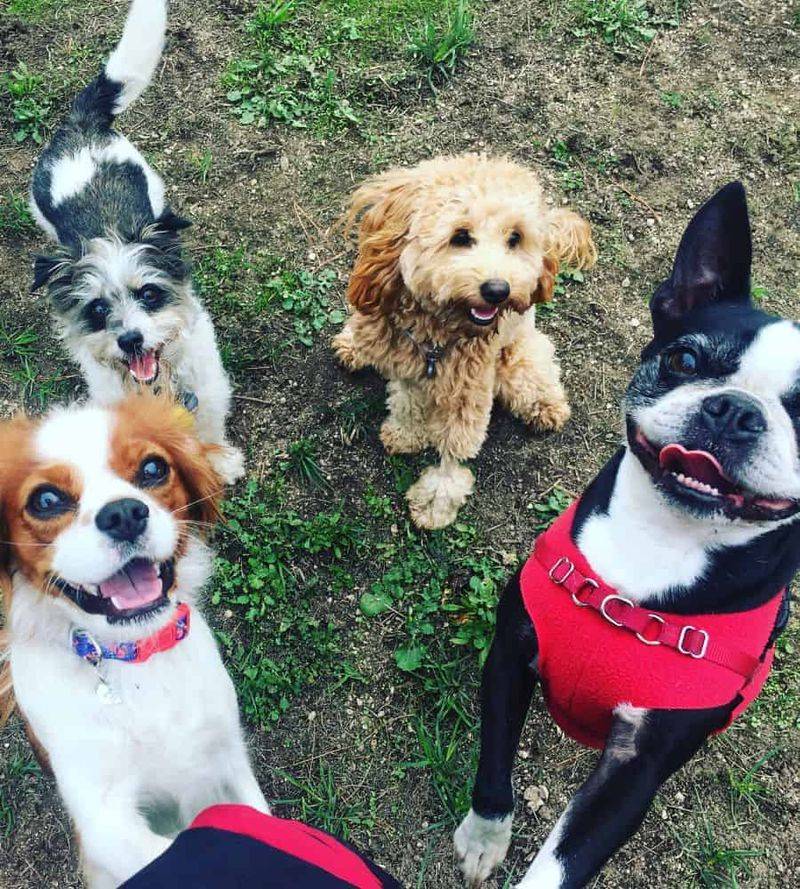
Used as a correction, “no” becomes a common part of a dog’s vocabulary. Its effectiveness depends on consistent tone and timing, not just repetition. This command serves as a universal stop signal, halting unwanted behavior and redirecting focus.
With “no,” dogs learn boundaries and acceptable behavior. It’s a command that requires clarity and firmness, aiding in the development of a well-mannered pet.
Though simple, “no” plays a pivotal role in everyday interactions, helping dogs understand limits and act accordingly.
Walk – The Excitement Trigger

Dogs often associate “walk” with their favorite activity. Many will respond to the word with tail wags or running to the door, even before a leash appears. The promise of outdoor adventure and exploration makes this word an instant excitement trigger.
“Walk” signals a change from routine, offering physical exercise and mental stimulation. For dogs, it’s not just about moving; it’s about discovering new scents and sights.
The anticipation of a walk brings joy and energy, making it a cherished part of a dog’s day-to-day life.
Treat – The Motivation Word
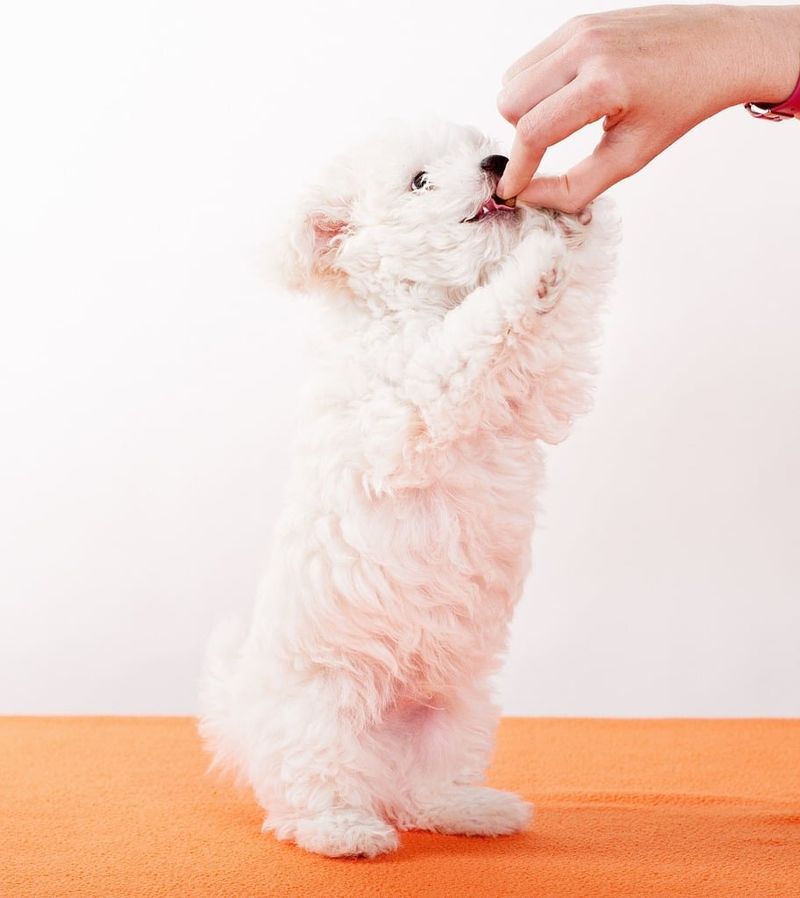
Most dogs learn “treat” quickly because it’s directly linked to reward. The sound of the word alone can produce an immediate attention shift. It’s a magic word that encourages compliance and eagerness to learn.
“Treat” is more than a food incentive; it’s a tool for positive reinforcement. It helps in reinforcing good behavior, turning commands into fun learning experiences.
The joy of a treat goes beyond taste—it’s about the bond it strengthens between dog and owner, built around trust and reward.
Ball – The Toy Identifier
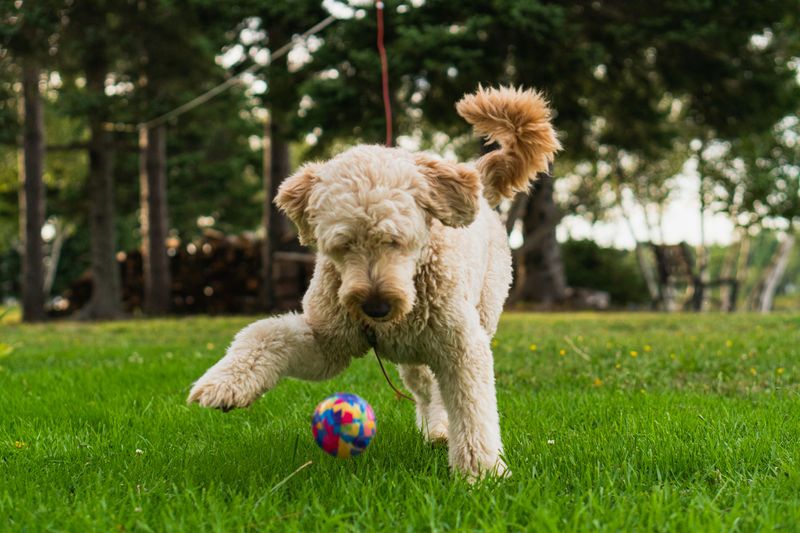
For dogs that play fetch, “ball” becomes a recognizable object label. Some breeds, especially retrievers, respond with excitement or go looking for it. The word brings to mind endless games and joyful pursuits.
“Ball” serves as an engagement tool, providing both exercise and mental stimulation. It’s not just a toy; it’s a symbol of playtime and companionship.
This simple word can transform a mundane day into an adventure, with dogs eagerly participating in the fun.
Good – The Positive Reinforcer
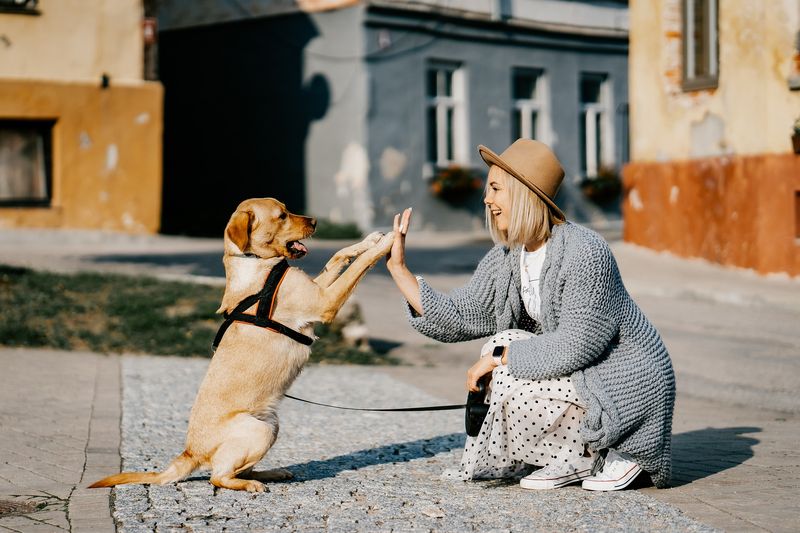
Words like “good” or “good boy/girl” become signals of approval. Tone matters here—praise often becomes a reward in itself. It reinforces positive behavior, making dogs feel appreciated and understood.
“Good” acts as a verbal pat on the back, encouraging dogs to repeat desirable actions. It’s a cornerstone of training, aligning actions with rewards.
The simplicity of “good” belies its power, creating a positive feedback loop that enhances the human-dog relationship.
Outside – The Doorway Cue

“Outside” is often associated with bathroom breaks or playtime. Dogs quickly connect this word with a change in environment and physical activity. It’s a cue that promises adventure and a shift in scenery.
This word provides dogs with a sense of anticipation, preparing them for what’s beyond the door. It’s more than a command; it’s an invitation to explore.
The allure of “outside” is universal, appealing to dogs’ natural curiosity and love for the outdoors.
Car – The Ride Association
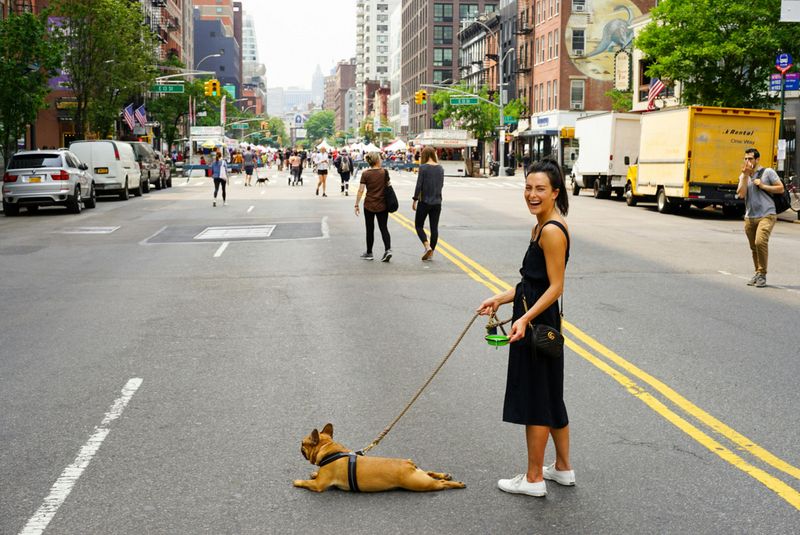
Many dogs understand “car” and associate it with either excitement (adventures!) or anxiety (vet visits). The word often leads to anticipatory behavior.
“Car” is a gateway to new experiences, from joyful trips to the park to essential vet appointments. It’s a word that encapsulates both thrill and apprehension.
The response to “car” reflects a dog’s experiences, shaping their readiness for travel and exploration.
OK – The Release Word

Used as a release cue from “stay” or after waiting, “OK” is commonly taught in structured training sessions and is tied to movement or permission. It signifies freedom, allowing dogs to break from a command.
“OK” provides dogs with a clear endpoint, marking the transition from command to action. It’s a liberating word, signaling that they’ve met expectations.
The simplicity of “OK” belies its importance, serving as a bridge between discipline and relaxation.
Name – Personal Recognition
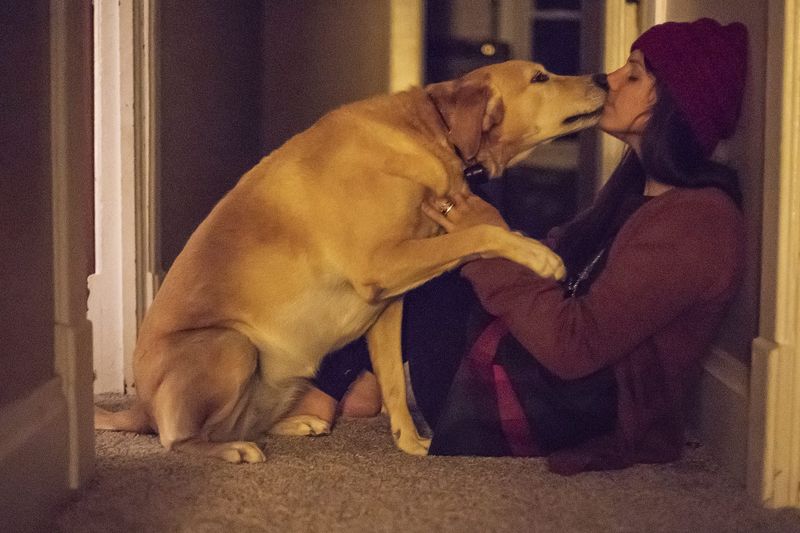
Most dogs learn to recognize their own name, not as a command but as a signal that someone is addressing them directly. It’s the cornerstone of personal recognition within their social environment.
A dog’s name is a verbal beacon, drawing its attention swiftly and effectively. It cuts through distractions, capturing focus with familiarity.
This personal identifier deepens the bond between pet and owner, providing a unique way to engage with one another.
Maybe – The Abstract Concept

Dogs don’t grasp uncertainty. Words like “maybe” have no clear action or outcome tied to them, making them meaningless in a dog’s world. The vagueness of “maybe” leaves dogs puzzled, as they thrive on clarity and directness.
Without concrete signals, dogs are left trying to decipher what is expected of them. Their world is one of black and white, where ambiguity doesn’t fit.
This word highlights the gap between human language complexity and canine comprehension, emphasizing the need for straightforward communication.
Tomorrow – Time Beyond Routine
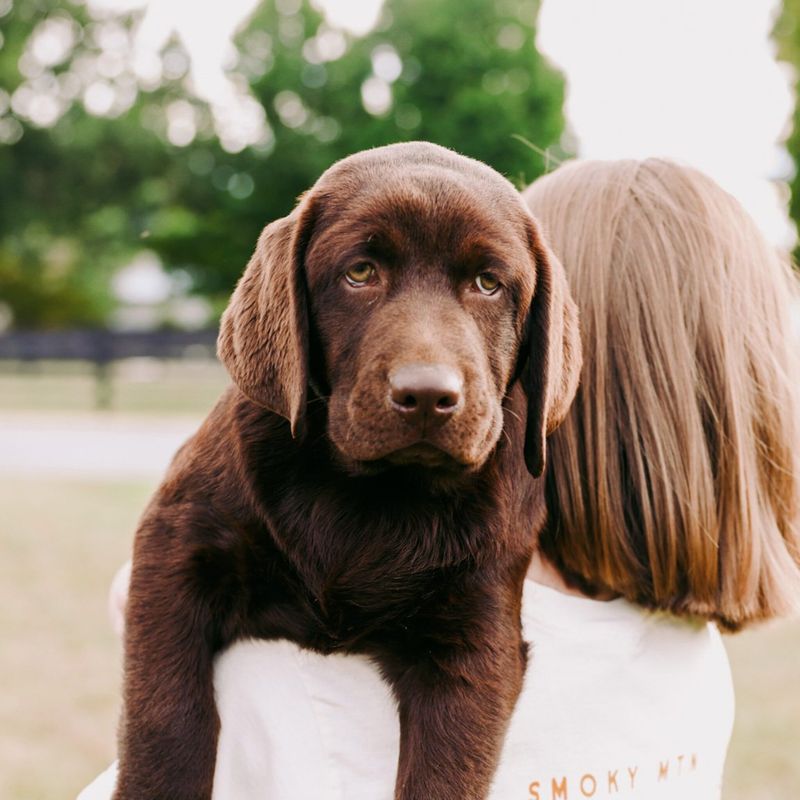
Dogs understand routines, not calendars. Words related to future planning have no real-world association they can interpret. The concept of “tomorrow” doesn’t exist in a dog’s immediate perception.
Their understanding is anchored in the present or the immediate past, where cues and actions create meaning. “Tomorrow” lacks the immediacy that dogs rely on for understanding.
This disconnect underscores the difference in how humans and dogs perceive time, reminding us of the simplicity in which dogs live.
Why – The Question Without Context

“Why” implies reasoning or causation, concepts dogs don’t process verbally. Asking a dog “why” has no actionable meaning. Their world is action-oriented, not introspective or analytical.
Without context, “why” becomes a string of sounds without substance. Dogs respond to direct communication, where signals are clear and intentions are obvious.
This word exemplifies the human tendency to over-explain, where simplicity would better serve our four-legged friends.
Always – Abstract Frequency

Words like “always” or “never” express time-based absolutes that dogs can’t comprehend, as their learning is based on repetition and association. These abstract concepts don’t translate into actionable commands.
Dogs thrive on predictability and routine. “Always” lacks the tangibility that anchors their understanding of the world.
This limitation reminds us of the importance of clear, repetitive cues in dog training, where consistency creates comfort and comprehension.
Because – Logical Connectors

Explanatory words like “because” link ideas for humans but carry no tangible or actionable meaning for dogs. Such logical connectors are beyond their cognitive reach.
Dogs learn through direct experience and reinforced behavior, not through logical reasoning. “Because” adds complexity without clarity.
This highlights the instinct-driven nature of dogs, where clear commands and positive reinforcement are the keys to effective communication.
Guess – Vague Commands
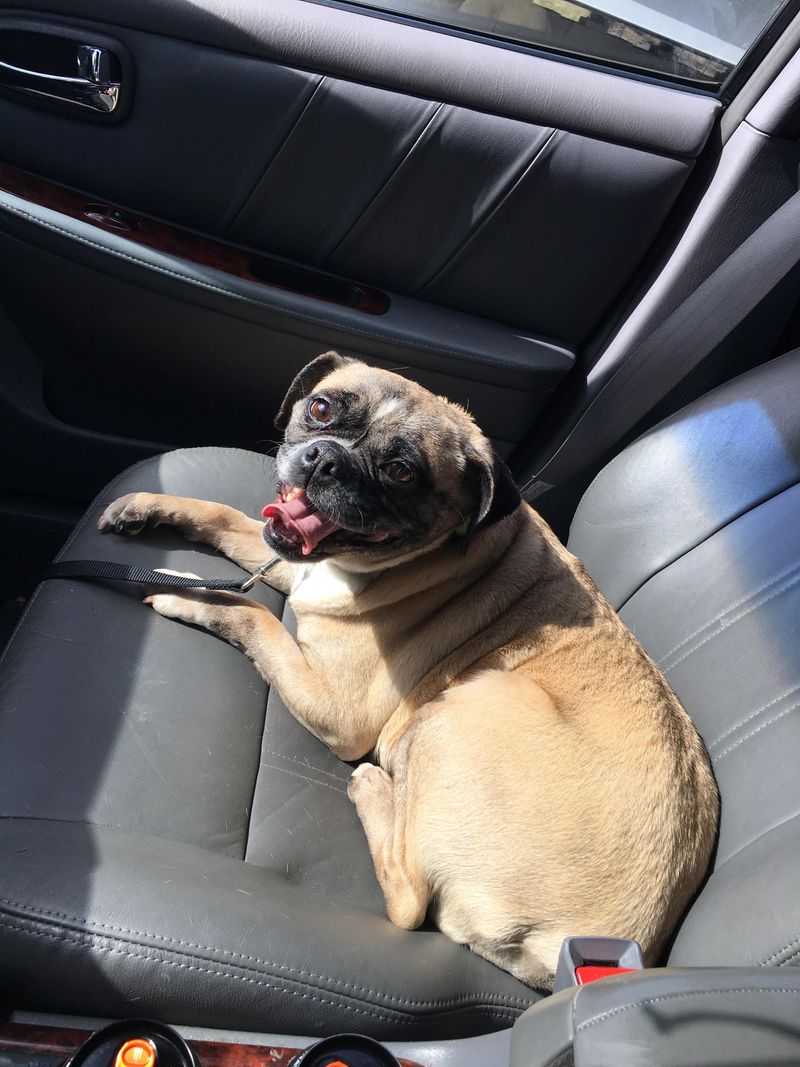
“Guess” implies ambiguity, which is the opposite of effective dog training. Dogs respond best to clear, consistent cues.
The uncertainty of “guess” leaves dogs bewildered, as they seek direct guidance from their human companions. Their learning thrives on specificity, where clarity paves the way for understanding.
This word underscores the need for straightforward communication in training, ensuring dogs can follow commands with confidence.

